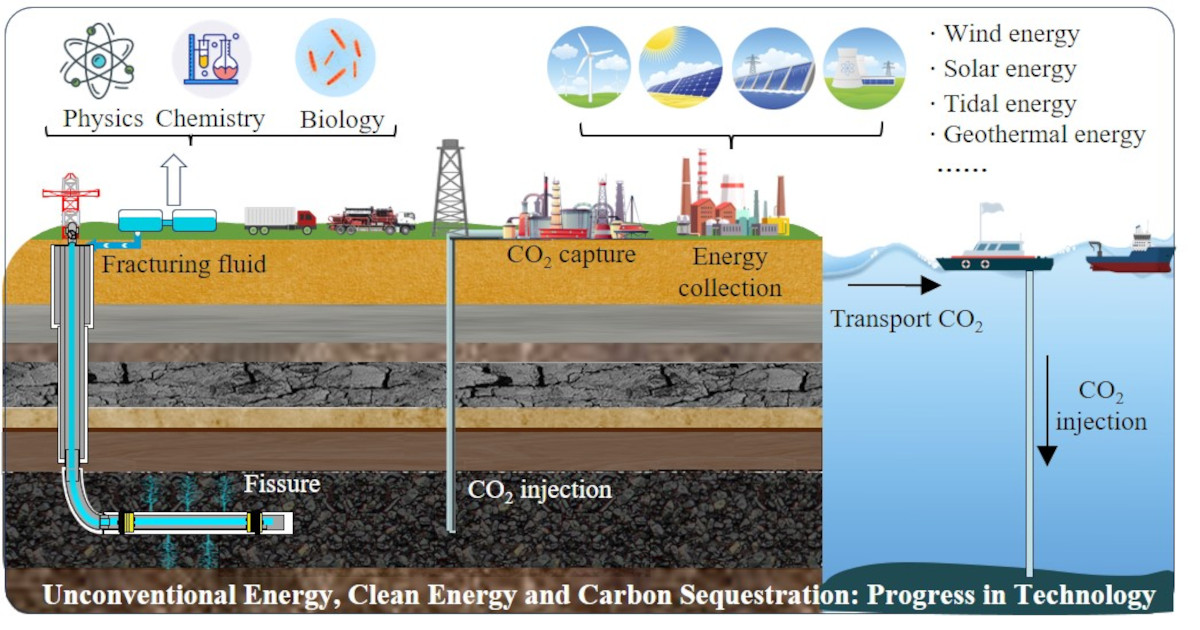Unconventional Energy, Clean Energy and Carbon Sequestration: Progress in Technology
A special issue of Processes (ISSN 2227-9717). This special issue belongs to the section "Energy Systems".
Deadline for manuscript submissions: 30 June 2026 | Viewed by 15473

Special Issue Editors
Interests: unconventional gas; liquid nitrogen fracturing; coalbed methane recovery; carbon capture and storage; dust control
Special Issues, Collections and Topics in MDPI journals
Interests: hydraulic fracturing; coalbed methane; microseismic monitoring; disaster control
Interests: unconventional gas resources; carbon sequestration; hazard control in coal mines
Special Issues, Collections and Topics in MDPI journals
Interests: mechanism of enhancing permeability in deep coal seams; prevention and control of gas disasters; intelligent gas extraction technology and equipment
Special Issue Information
Dear Colleagues,
Driven by global concerns about environmental and climate change, scientists and engineers are looking for clean and renewable energies, and searching for a way to achieve a low carbon footprint for fossil fuel industries. Many researchers have made significant contributions to the development of unconventional energy resources (shale gas, coalbed methane, and natural gas hydrates), renewable energies (hydrogen, solar energy, geothermal energy, wind power, etc.), and carbon storage in underground formations. Industries with a high-intensity carbon footprint, for instance petroleum and mining industries, face more challenges to eliminate their great amount of carbon emissions. Until now, the ratio of unconventional and clean energies to the total global energy is still small. Few commercial projects have been built for large-scale carbon sequestration. Therefore, further research is required to investigate the intrinsic mechanism of clean and low-carbon energy development.
This Special Issue, “Unconventional Energy, Clean Energy and Carbon Sequestration: Progress in Technology”, presents recent advancements in the unconventional and clean energy development and carbon sequestration.
Topics include, but are not limited to, the following:
- Development of unconventional gas resources;
- Clean and renewable energy;
- Gas extraction and hazard prevention in coal mines;
- Advanced progress in reservoir stimulation techniques;
- Carbon capture, sequestration, and utilization.
We look forward to receiving your contributions to this Special Issue.
Dr. Lei Qin
Dr. Quangui Li
Dr. Xu Yu
Prof. Dr. Guanhua Ni
Guest Editors
Manuscript Submission Information
Manuscripts should be submitted online at www.mdpi.com by registering and logging in to this website. Once you are registered, click here to go to the submission form. Manuscripts can be submitted until the deadline. All submissions that pass pre-check are peer-reviewed. Accepted papers will be published continuously in the journal (as soon as accepted) and will be listed together on the special issue website. Research articles, review articles as well as short communications are invited. For planned papers, a title and short abstract (about 250 words) can be sent to the Editorial Office for assessment.
Submitted manuscripts should not have been published previously, nor be under consideration for publication elsewhere (except conference proceedings papers). All manuscripts are thoroughly refereed through a single-blind peer-review process. A guide for authors and other relevant information for submission of manuscripts is available on the Instructions for Authors page. Processes is an international peer-reviewed open access semimonthly journal published by MDPI.
Please visit the Instructions for Authors page before submitting a manuscript. The Article Processing Charge (APC) for publication in this open access journal is 2400 CHF (Swiss Francs). Submitted papers should be well formatted and use good English. Authors may use MDPI's English editing service prior to publication or during author revisions.
Keywords
- unconventional energy resources
- coalbed methane
- shale gas
- reservoir stimulation technology
- geo-carbon sequestration
- clean energy
Benefits of Publishing in a Special Issue
- Ease of navigation: Grouping papers by topic helps scholars navigate broad scope journals more efficiently.
- Greater discoverability: Special Issues support the reach and impact of scientific research. Articles in Special Issues are more discoverable and cited more frequently.
- Expansion of research network: Special Issues facilitate connections among authors, fostering scientific collaborations.
- External promotion: Articles in Special Issues are often promoted through the journal's social media, increasing their visibility.
- Reprint: MDPI Books provides the opportunity to republish successful Special Issues in book format, both online and in print.
Further information on MDPI's Special Issue policies can be found here.








